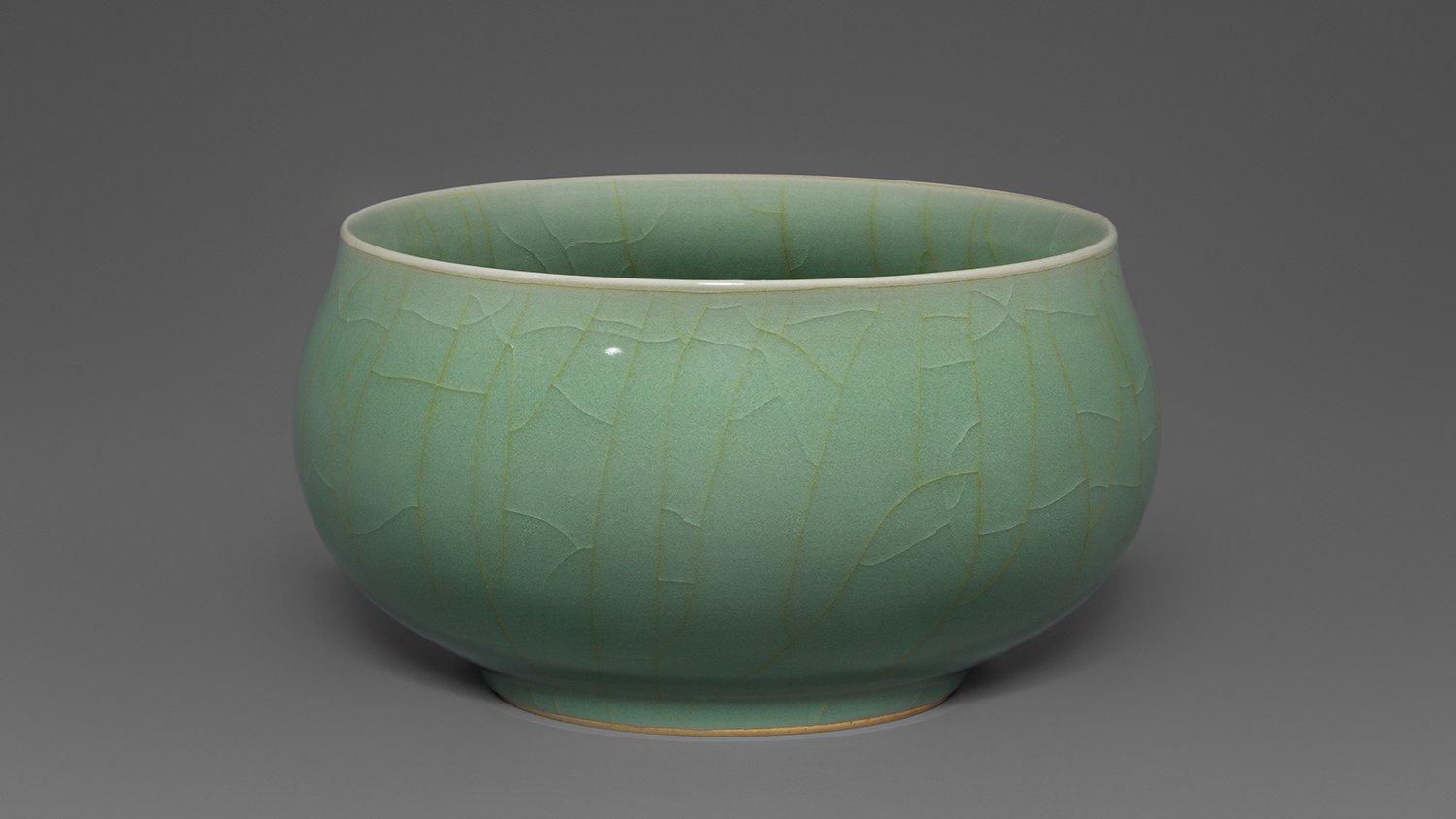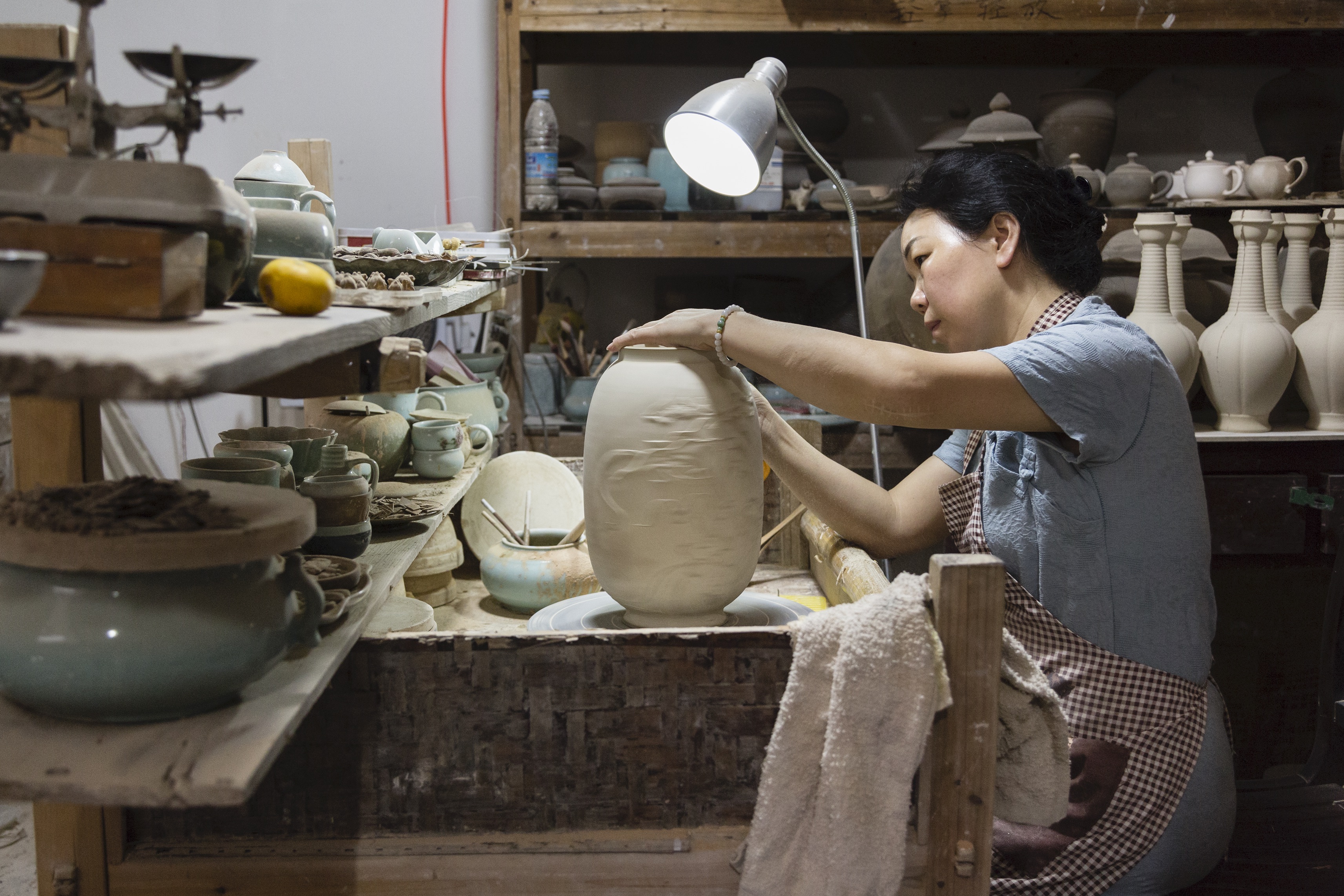Chinese Porcelain Art in Pale Green-Blue Shades

China has produced a variety of porcelains using specialized crafts with local clays and earth for centuries. These include the pale green-blue shimmering celadon, which mirrors the deep green landscapes and the blue sky of the province of Zhejiang. The new exhibition at the Ethnographic Museum at the University of Zurich is dedicated to this jade-like porcelain and to the skills of its creators. The exhibition is co-curated with a guest curator from Berlin, sinologist and ceramicist Anette Mertens, who by means of exemplary masterpieces presents the results of her celadon research and lets the master craftswomen and craftsmen, and their apprentices, speak. Her collaboration with them, as well as with social anthropologist and sinologist Mareile Flitsch of the University of Zurich, has resulted in this exhibition which presents the traditions, technologies and skills of the craft.
Celadon craftmanship looks back at a long tradition
The Chinese province of Zhejiang has been renowned for its celadon porcelain since at least the 9th century. The people who produced it needed expertise in the processing of materials, especially in the many unpredictable factors of the complex firing technologies. Longquan celadon first flourished in the 11th to the 14th centuries, when it was included in the imperial collections. As it grew in popularity it became global export ware. Today major museums all over the world display precious celadon artefacts from the Song, Yuan and Ming eras. Longquan celadon gradually fell into oblivion until the end of 19th century. But it was later rediscovered by scholars: With their research, and on the initiative of Chinese Premier Zhou Enlai, celadon production was relaunched in state factories in the 1950s.
An old artisanal craft undergoes a new resurgence
A first modern generation of ceramicists – in more recent times including female ceramicists– has come of age, educated in state enterprises and research institutes. With the economic changes of the 1990s, many of them founded private workshops. A milestone and a major challenge for the complex craft was the transition from wood-fired dragon kilns to today’s gas-fueled kilns. The technique is now recognized by UNESCO as an item of intangible cultural heritage and protected under Chinese culture laws. With high-end celadon, some of the ceramicists have successfully positioned themselves as nationally renowned masters. In workshops around the celadon museum in Longquan today, they specialize in glaze colors and craquelures and develop their own individual styles. ”Celadon porcelain is experiencing a new resurgence,” says co-curator Anette Mertens.

What is a perfect celadon?
Alongside the changes in and modernization of the craft, the curators were also interested in exploring the criteria by which today’s master craftspeople measure the value and quality of celadon. Which spectrum of clays, glazes and decors provides the best base for their skills and creativity? “The craftswomen and craftsmen focus on historic pieces and styles,” Anette Mertens explains. “The Song dynasty celadons, for example, are still unparalleled today.” The related knowledge is retained not only in the ceramics themselves, but equally in shard fragments found around historic kiln sites. They serve as a source of inspiration for the ceramicists in Longquan today. “The vessels on display in the exhibition represent the repertoire of these modern celadon artists,” says Mareile Flitsch. “Visitors to the museum will get to know them as glaze enthusiasts, incessantly striving for the perfect celadon.”